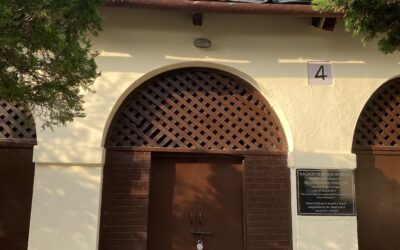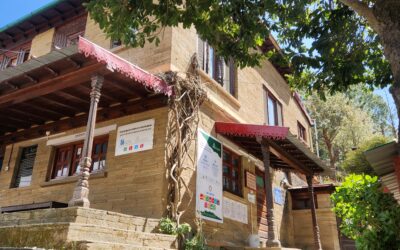Slogans spray painted on the wall of a flyover in front of one of Nizamuddin Basti’s exits
As a young girl, having always lived in Delhi, walking through Nizamuddin basti on a Wednesday morning quite literally brought me to a halt. There was so much to take in, to experience all at once. From the assault of the enticing smell of delicious food cooking to the serendipitous little plants growing between the cracks in the walls, it took me a whole three days’ worth of trips, to and fro this complex and vibrant little world to realize that all I saw was a single story.
The writer Chimamanda Ngozi Adichie uses the term “single story” to describe our natural tendency to form overly simplistic, often false assumptions about people and their situations. This became my biggest learning during the India Fellow induction bootcamp last month, the fact that every single individual is different from another in countless ways.
I stumbled upon this intriguing connection when whilst aimlessly walking through (or our unwillingness to admit that we were lost), my group of co-fellows and I found lines of walls spray painted with slogans like,
“Hum Dekhenge!”
“Halla Bol!”

I assumed that these were written in response to the CAA/NRC law passed earlier this year. These visuals set me towards thinking about the politics of resistance and the way it has prevailed in my life and around me until that moment. In Delhi, I had witnessed dissent in almost all forms. Some brought change, while a lot did not.
Being a part of the capital city’s university for the last three years had materialized what I had grown up watching on television and reading about in the newspapers to real life, right in front of me. I had also previously been a part of this dissent myself, with the opportunity of being able to express my views given to me from my schooling. Whether it was, the newly introduced “Odd-Even” rule to reduce pollution or the importance of breast cancer awareness, I had been a part of the dialogue in some way or the other.
And so, looking at the peculiar view in front of me, I knew I had to sit down to sketch the atypical picture in the middle of my field notes. I could almost imagine the scene in my head, of the way people may have gathered. Apart from my own imagination and experiences adding to this visualization, the pictures had been repeatedly flashed across all media platforms for months; of women’s solidarity with people of all ages and from all walks of life.

But what I had imagined was not their story, it was not the 300 people who had stood in front of these walls to voice their concerns. Upon research, I found not more than a handful of articles elaborating on gathering at Nizamuddin, mostly being factual descriptions and numerical figures.
You see, even those articles were not their stories, it was just one of the many. There may have been countless reasons why all those people wanted to be together in front of a bridge in the freezing cold. A school friend had more than a few. But these reasons got generalized immediately under a single narrative, especially since it was all brought to a halt with the coronavirus lockdown.
What were those reasons and who tells them to people like you and I?
I found an answer to this question on the next day of our visit over a cup of delicious tea.
An old man, having lived in the Nizamuddin basti his entire life, had started a tea stall after losing his job due to the pandemic. Between conversations, he portrayed his concern over the increasing divide in the community. All he wanted, he said, was to see everyone live happily in the place that had already undergone so many changes in front of him over the last few decades. Those pictures of resilience are thus forever (until they get painted over) left for the world to ponder over, only through spray painted words on a wall on the other side of the bridge.
I found these dots and questions connecting to a much larger theme in my life, when my cohort sat down to watch India Untouched, a documentary film about the still highly prevalent caste system in our country. A beautifully simple movie made by Indian filmmaker Stalin K, it portrays a diverse array of stories that highlight just how the idea of “untouchability” finds its way even, even to a space like Jawaharlal Nehru University (JNU).
In the past, I had associated untouchability with something simply to condemn, having now recalled the kind of practices I heard and unknowingly witnessed being followed. I had only ever seen untouchability as a problem for “others”, even if I knew that it was an incorrect practice rooted in caste and religion. That singular perspective changed when I widened my view and learned to empathize, knowing that unspoken ambitions and goals were being hindered by something that was technically illegal in our country.
And so I realized, never before had our internalized practice of natural assumptions bothered me such. It was and is, constantly difficult to remind oneself to think about learning through a wider lens and not a tunnel vision that is only presented to us, whether in the form of formal education or media.
My train of thought also led me to question the hundreds, thousands, millions and billions of people who currently, or in the past have left something behind. Of those testimonials, we will probably perceive some, or even all as a single story.
In conclusion, I would like to believe that I have found a good starting point for my fellowship, and that it is my promise to look for as many stories as I can – not just from the same person or a different perspective, but as many as can be told and as many I can listen to.




0 Comments